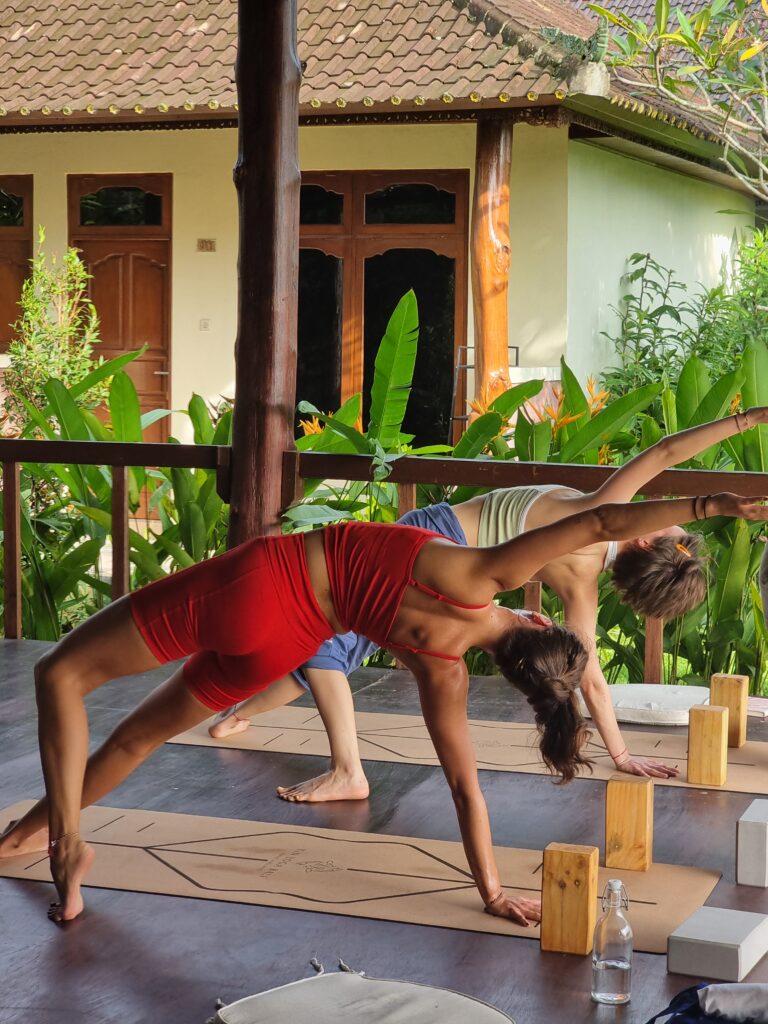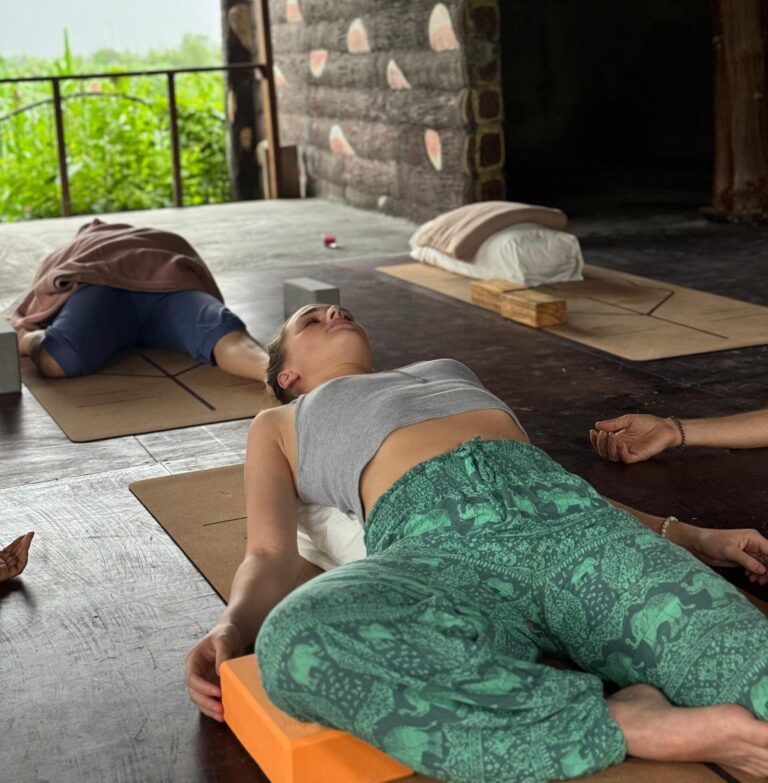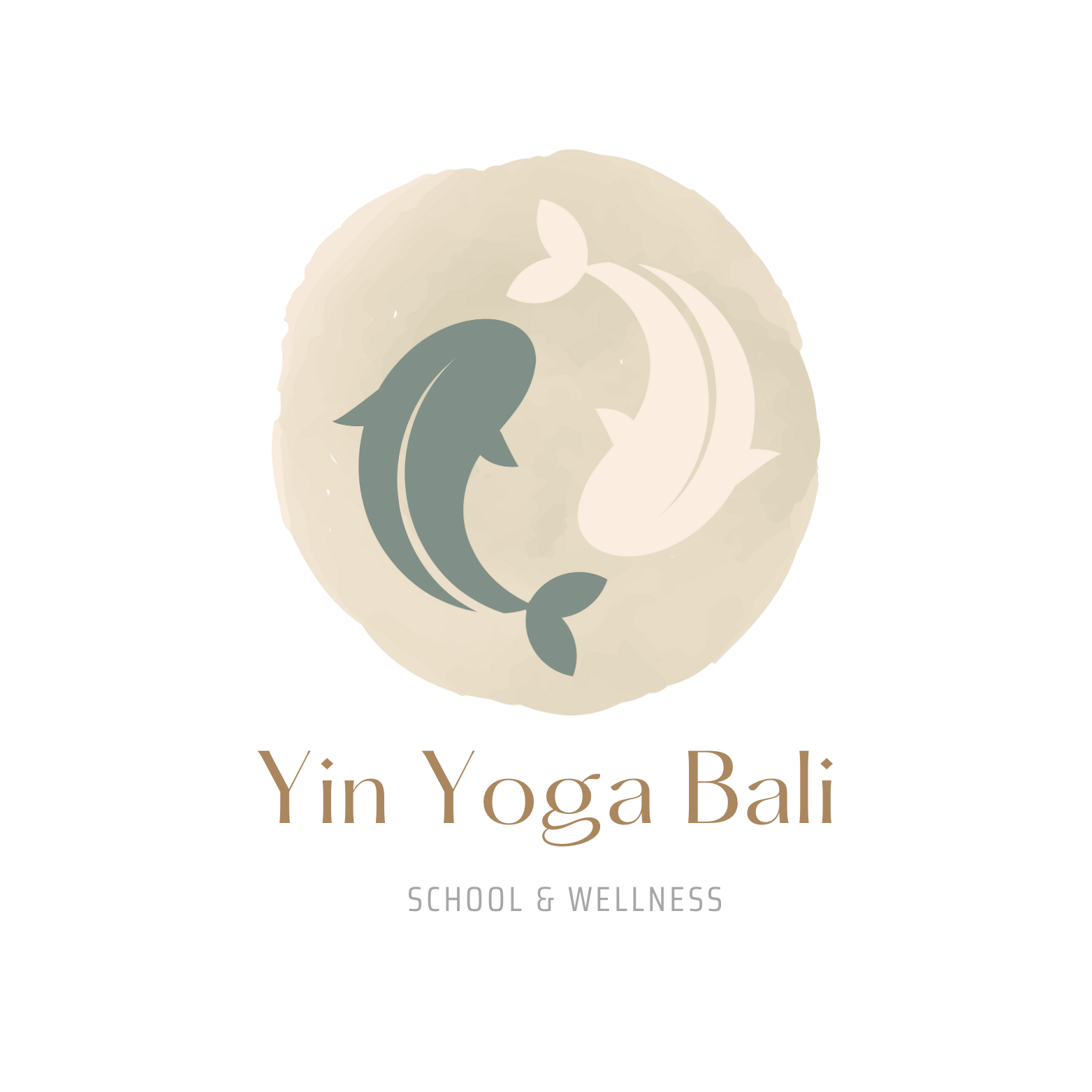The Key To Resilient Inner Balance
What if the solution to building balance is not in what you do, but in what you don’t do?
In today’s fast-paced world, life often feels like a constant rush—a never-ending series of tasks, appointments, and responsibilities. Our minds are bombarded with thoughts, our bodies are on overdrive, and we’re left in a perpetual state of stress.
It’s no surprise that we can easily become disconnected from our own bodies, emotions, and inner peace.
This is why, the core principle of Yin Yang Yoga is to find balance by sometimes… doing less.

Yin YANG YTT: The Art of Balancing Life’s Energies
A practice is designed to bring equilibrium between the two polar energies that govern our lives. Yin and Yang, originating from ancient Chinese philosophy, represent opposing forces that are interconnected and interdependent.
In the context of yoga, they serve as metaphors for the dynamic tension between action and rest, effort and ease, heat and cool.
The Yang Energy: The Fire of Life
The Yang energy is dynamic, active, and outward-moving.
It represents the heat, intensity, and forward momentum that drive us throughout the day. The Yang aspect of yoga typically encompasses vigorous, dynamic practices, such as Vinyasa and Power Yoga, where movement is linked with breath to build strength, endurance, and flexibility.
The true essence of the Yang practice in Yoga, lies in its ability to connect movement, breath, and mindfulness. As we flow through a series of postures, the breath becomes the bridge between body and mind. The movement isn’t merely for building physical strength but for cultivating mental resilience and emotional balance. This fusion of breath and movement is an invitation to find flow in the midst of life’s chaos—bringing us into the present moment, sharpening our focus, and heightening our awareness.
But wait, all these qualities sound great, so why do we need any other yoga approach?
The problem arises when our everyday lives tend to be predominantly Yang driven.
From waking up to falling asleep, we are often operating in overdrive—pushing our bodies and minds to their limits, trying to keep up with the demands of work, relationships, continuous stimulation from the environment, and the endless list of responsibilities.
This constant drive and outward action leaves many of us feeling drained, burned out, and disconnected from our bodies, needs and emotions.
And so, the overflow of yang energy, calls for its counterpole.

The Yin Energy: Cooling Down the Fire
On the flip side, we have Yin energy—a slower, more introspective force that encourages stillness, rest, and surrender.
Yin yoga focuses on long-held, passive stretches that target the deep connective tissues of the body, such as ligaments, tendons, and fascia. The practice is designed to help us slow down, cool off, and restore balance after the heat and intensity of our Yang-driven lives.
Unlike the Yang side of yoga, which can be intense and action-oriented, Yin teaches us to be at ease with stillness.
When we settle into long-held poses, we create space in both the body and mind—allowing energy to flow freely through the meridian channels. This deep relaxation taps into the parasympathetic nervous system, which is responsible for our ‘’ rest and digest ‘’ state.
In a world that is constantly in overdrive, it makes sense that the Yin practice becomes essential for restoring harmony to both the mind and body, helping us to relax, release, heal and recalibrate.
Yoga: Beyond Asana
In the larger context of yoga, the Asana (physical postures) is just one aspect of the practice.
This is why the ultimate goal of Asana isn’t to attain perfection in the pose, but to strengthen and prepare the body so that it is resilient, open, and ready for deeper states of consciousness.
As we refine our physical practice, we also learn to open up the energy channels (Nadis) within the body, allowing the life force energy (Prana) to flow freely.
How does Yin and Yang come together in our yoga practice?
When we learn to balance both Yin and Yang energies, we are better equipped to tap into this inner life energy (prana), bringing ourselves closer to Samadhi—the ultimate state of consciousness, peace, and liberation. In this state, we transcend the fluctuations of the mind and experience the present moment with clarity, presence, and joy.
The Balance We Need
The true benefits of Yin Yang yoga are in learning how to navigate life with grace, awareness, and balance.
And furthermore, in embracing both polarities, the active, outward-moving Yang energy and the slow, restorative, stillness of Yin, we enter a state of wholeness and project this same acceptance out to the world.
A Yin Yang Yoga Teacher Training is a powerful opportunity to learn how to embody this balance, both in your practice and teaching. As you deepen your own understanding of these polarities, you can guide others to find harmony in their own lives and start navigating the inevitable challenges of life with grace, awareness and inner peace… intact.
While the world will never stop asking us to do more, we have a chance to create our own equilibrium, by embracing both of the polarities—knowing when to pause, restore and dance between the action and stillness.
Yin Yang YTT is the invitation to live the balance of the two energies, sustaining a truly healthy, mindful and fulfilling life.
